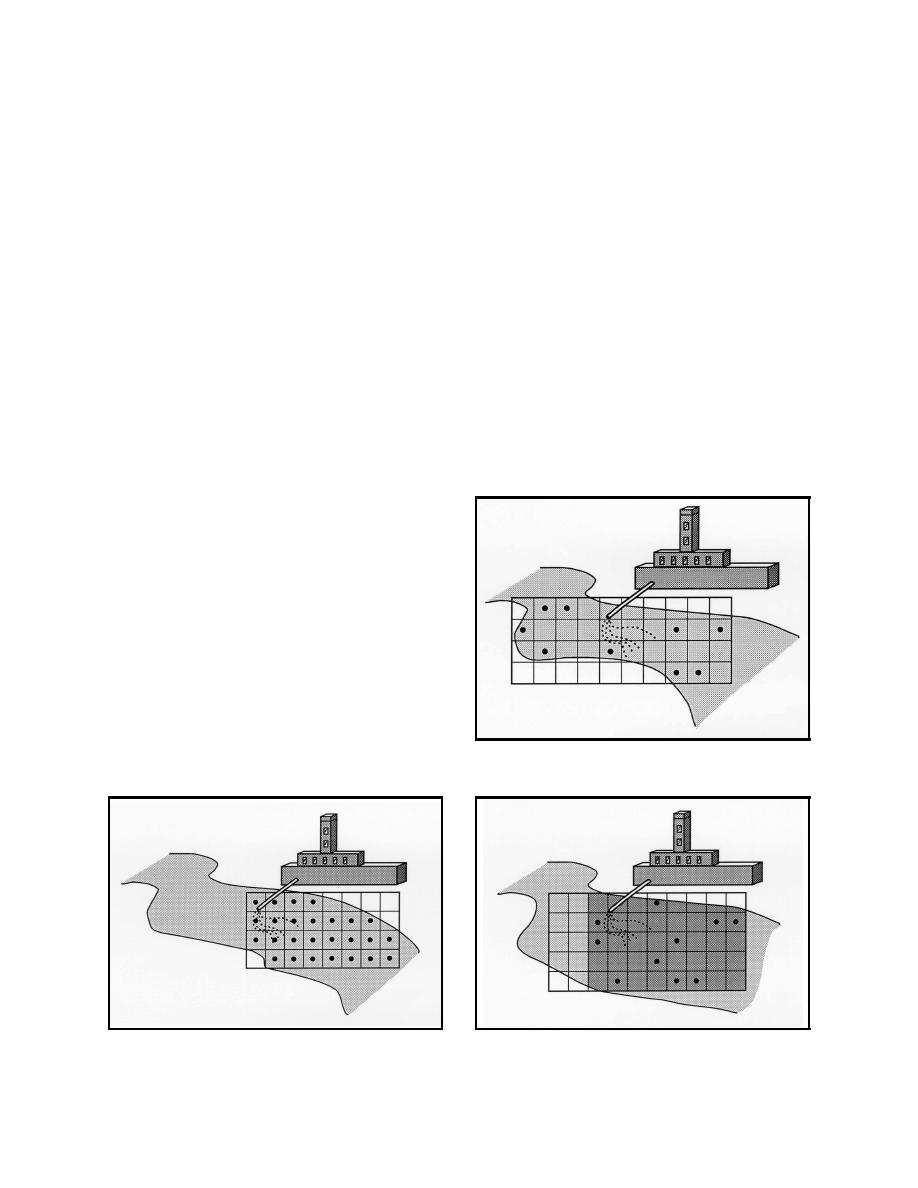 |
||
|
|
||
|
Page Title:
Figure 2. Systematic random sampling |
||
| |||||||||||||||
|
|
 ERDC TN-DOER-C15
July 2000
essentially the prescriptive approach described in Olin-Estes and Palermo (2000a). A systematic
approach involves imposing a uniform grid over the area of interest and sampling from the same
location in each grid. A random approach involves selecting sampling points within a gridded area
using a random number generator to choose from among the alternative sample locations. The
random approach is optimum from a statistical standpoint but in environmental sampling may not
be the best choice. If the number of samples being taken over a large area is small, purely random
sampling could well miss an area of known contamination. The judgmental and systematic
approaches help to compensate for this, but may violate the assumption of randomness required in
statistical analysis. In practice, the following three principal sampling approaches that are used in
environmental sampling incorporate a combination of these elements:
Systematic random.
Judgmental random.
Systematic judgmental.
As previously mentioned, a uniform grid is imposed over the area to be sampled in the systematic
methods. In the systematic random method, a random number generator is then used to pick the
locations within the grid that are to be sampled
(Figure 2). Alternatively, one may select only
every nth member from the sampling grid with the
starting element randomly selected (Lubin, Wil-
liams, and Lin 1995). Systematic judgmental
methods focus attention on the area most likely to
be contaminated, a grid is imposed, and a sample
is taken from the center of each grid (Figure 3).
The judgmental random method involves separat-
ing the area of interest into blocks that are ex-
pected to contain similar samples (such as similar
levels of contaminants). A grid is imposed over
these areas and sample sites are selected randomly
Figure 2. Systematic random sampling
within each block (Figure 4). This is also referred
Figure 3. Systematic judgmental sampling
Figure 4. Judgemental random sampling
5
|
|
Privacy Statement - Press Release - Copyright Information. - Contact Us - Support Integrated Publishing |